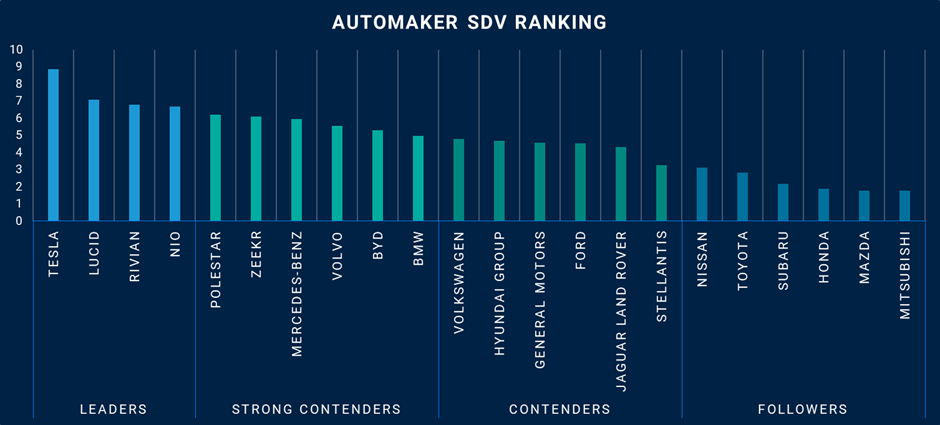The automotive industry is undergoing a significant transformation as it embraces digitalization and ventures into software-defined vehicles (SDVs). This shift entails automakers moving beyond the conventional notion that vehicles are finished products upon arriving at dealerships to devices that continually receive updates and enhancements throughout their lifespan.
To accomplish this, automakers are equipping their next-generation vehicles with ample computing power and memory headroom. However, the realization of SDVs encompasses more than just hardware upgrades. It demands flexible software-first vehicle electric/electronic architectures and vehicle-to-cloud software platforms that abstract the intricate network of virtual electronic control units (ECUs) within vehicles into a cohesive whole, often referred to as the Automotive OS.
These platforms should be connected to the cloud and back-end infrastructure to enable and evolve from cloud-native development and digital twins, which streamline and speed up software development and testing. This enables an ongoing cycle of development, implementation and enhancement of vehicles and their functionalities underpinned by data insights. Nevertheless, it must be accompanied by a data-driven, cross-functional and agile approach to vehicle design. Lastly, a comprehensive approach to lifecycle management and cybersecurity are equally important.
Fundamentally, this transition calls for a shift in mindset, a reevaluation of objectives and business models and a distinct skill set that diverges from the industry's accustomed norms.
Despite substantial investments, the adoption of SDVs is unfolding gradually. Merely 480,291 units were sold in the U.S. in 2022, according to Wards Intelligence. While various automakers have unveiled their strategies for SDV production in the early and mid-decade, a few have encountered delays due to the intricacies of software development challenges. This serves as a testament that SDVs are substantially more complex and far-reaching than initial expectations, particularly for established automotive manufacturers deeply rooted in legacy practices.
Recognizing that automakers are traversing distinct stages of digital transformation, Wards Intelligence has evaluated and ranked 22 OEMs based on their progress toward SDVs, offering insights into the current technical prowess of each entity within this evolving domain.
Methodology
The most crucial factor in assessing an automaker’s SDV journey is having an SDV strategy and putting it into action. Therefore, Wards Intelligence developed an SDV strategy score for different OEMs.
However, as direct efforts are not the only contributors to a successful SDV transition, Wards Intelligence performed a multiple regression analysis – a statistical method that assesses potential causal relationships – to identify other essential elements. The model shows that OEM connectivity, electrification, portfolio complexity and financial strength affect OEM SDV performance by 74% (a high coefficient of determination [R2] in most study fields).
As a result, the ranking is based on 15 quantitative and qualitative variables, divided into five main categories: SDV strategy, connectivity, electrification, portfolio complexity and financial strength. The multiple regression results were also used to assign weights to the five criteria used for calculating the SDV ranking. The study was based on 2022 market data.

Results
Automakers were grouped into four categories based on their ranking position: leaders, strong contenders, contenders and followers.
- Leaders: OEMs that are already delivering SDVs. All leaders are new BEV entrants, digitally native, and adopting a software-first approach throughout their organizations. Except for Tesla, all other leaders have yet to attain scale or achieve financial stability. Consequently, whether they will maintain their commanding position in the long term remains uncertain.
- Strong Contenders: OEMs presently commercializing sophisticated semi-SDVs with a clear roadmap for launching full SDV platforms shortly. Apart from Polestar and ZEEKR, strong contenders are established OEMs with the financial stability, experience and brand legacy necessary to challenge the BEV startups that have yet to achieve scale and are still refining their vehicles.
- Contenders: OEMs yet to launch their next-generation platforms of semi-SDVs or that have set ambitious and potentially unattainable SDV timeline targets.
- Followers: OEMs that lack a public SDV roadmap and do not have a specific timeline, leading to their evaluation primarily based on other criteria that could impact their eventual SDV transition.
Key Takeaways
- Wards Intelligence considered age (a proxy for legacy) as a control variable in the multiple regression model, and the results confirm that younger OEMs have stronger SDV strategies than older ones. This is predominantly rooted in the clean slate that these OEMs possess, enabling them to move faster and adapt more quickly to market dynamics and customer preferences. In fact, their accelerated pace allows them to shape trends and customer expectations.
- Besides age, electrification, specifically the BEV index (OEM BEV sales/OEM total sales), has the highest impact on an OEM's SDV strategy, followed by connectivity – specifically, the number of OTA-enabled vehicle features.
- The ranking is dominated by BEV OEMs, with Tesla holding the top spot, followed by Lucid, Rivian and NIO.
- Among incumbent automakers, Mercedes-Benz and Volvo are the best positioned.
Wards Intelligence subscribers can download the full, detailed analysis HERE.





